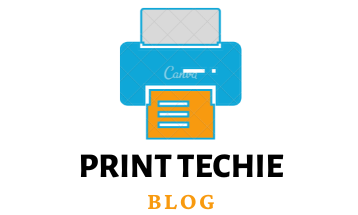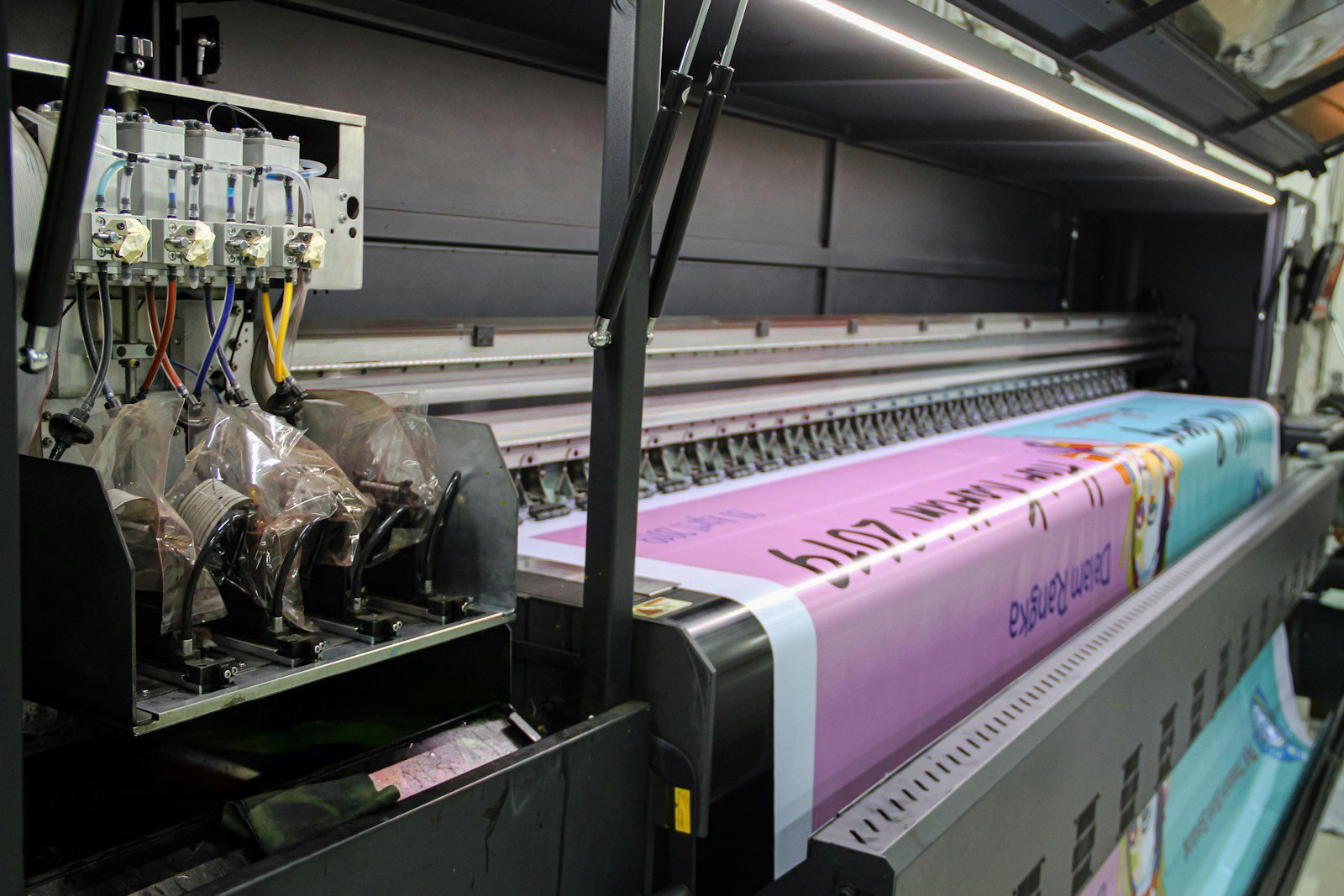Thanks to major advances in printing technology, it’s now possible to craft one-of-a-kind prints on various materials. Two leading techniques are DTF (Direct to Fabric) vs sublimation. With the former method, ink based on solvents is printed directly onto flexible surfaces such as vinyl; for the latter process, dye is first applied with special transfer paper and later pressed into polyester or other synthetic fabric using heat and pressure.
When it comes down to deciding between DTF vs sublimation printing, your project’s needs and budget will be the ultimate determinants. With this insight, we’ll explore DTF and sublimation printing by comparing them side-by-side while highlighting their advantages and disadvantages.
Direct to Fabric (DTF) printing:
DTF (Direct to Fabric) printing is a remarkable method of creating vibrant, highly detailed prints directly on versatile materials like textiles, fabrics, and vinyl. Not only does this method have the benefit of being able to be used for multiple surfaces, such as metal or plastic, but it is also frequently used for an array of promotional products, including custom signs, banners, and flags. With DTF printing technology, you can bring your ideas from concept to print faster than ever. DTF printing is budget-friendly and easy to incorporate into your business operations. However, DTF prints are less resistant to fading or damage than sublimation prints.
Sublimation printing:
Sublimation printing is an innovative technique that uses heat and pressure to transfer ink onto various surfaces like metals, plastics, fabrics, ceramics, and more. It begins with the reversed image printed on special paper using sublimation inks. This image then becomes part of the material by simply placing the sheet on top before applying heat and pressure simultaneously – leaving you with vibrant colors embedded deeply into your items for lasting results. Sublimation printing offers vibrant, robust prints that won’t easily fade or break. This technique is used to create apparel, mugs, phone cases, and other promotional products, as well as in various industries such as athletics and interior design.
Differences between (Direct to Fabric) DTF vs Sublimation Printing:
Materials used:
Regarding materials, Direct-to-Fabric (DTF) and sublimation printing are vastly different. For DTF Printing, solvent-based ink is printed directly onto fabrics such as vinyl or textiles. On the contrary, sublimation printing works by transferring dye via a heat press onto various surfaces like polyester fabrics, ceramics, plastic products & metals. By comparison, Direct-to-Fabric (DTF) printing can be utilized on many types of materials, such as fabrics, vinyl, and even metal. In contrast, sublimation printing is typically reserved for polyester fabrics and other synthetic resources.
Print quality:
When it comes to detailed images and small text, DTF printing offers high-quality prints; however, sublimation printing has a slight edge in clarity. Though there may be some differences between the two technologies regarding fine details or minuscule lettering, DTF prints are still of excellent quality. In contrast, sublimation printing produces vivid and precise prints with reliable colors that capture attention.
Durability:
Offering a longer lifespan than DTF printing, sublimation prints are incredibly resilient against fading and cracking due to constant exposure to the sun or other environmental factors. In comparison, DTF printed materials may show signs of damage quickly with time passing.
Color and ink used:
DTF printing techniques can be hazardous and smelly, as they use solvent-based ink, which is absorbed directly into the material’s fibers causing shrinkage or stretching. By contrast, sublimation printing utilizes a heat transfer method to embed dye particles in the fabric’s threads, making prints less likely to fade or crack over time.
Print area:
When it comes to the print area, DTF printing takes the cake. It has an impressive capability of printing on materials up to 16 feet wide and 100 feet long – a magnitude larger than what is achievable with sublimation printing which only allows for prints up to 40 inches broad and 60 inches long, depending on the size of heat press employed. As such, if you are looking into creating large-scale projects like banners or backdrops, then go for DTF Printing; however, if your goal is something more modest like clothes apparel or mugs, consider opting for Sublimation Printing instead.
Ultimately, DTF and sublimation printing are excellent methods of achieving crisp results. The one you select will depend on your project’s scope and budget constraints. For expansive projects, DTF printing is optimal – it can also be used with many materials. On the other hand, if brightness and durability are what you’re after, then sublimation prints should do the trick; these usually work best on polyester fabrics, though.
Advantages of DTF (Direct to Fabric) printing:
Lower cost:
When it comes to producing high-quality prints at a cost-effective price, DTF printing is the ultimate choice. Not only are supplies and equipment for DTF printing more easily available than its sublimation counterparts, but they’re also significantly cheaper – an ideal solution for small businesses or individuals with budget constraints. With DTF printing, you can get all the quality of other print technologies without spending too much.
Easy to use:
With minimal equipment needs, a straightforward process, and easy-to-learn instructions, DTF printing is the most convenient printing technology. Whether you are a beginner or an experienced printer looking for a simpler alternative, this technique offers access to everyone – so let’s get started.
Used on a wide range of materials:
DTF printing is a highly versatile technology capable of producing customized signs, banners, flags, and backdrops with remarkable detail. The process works on multiple materials such as textiles, types of vinyl, and even metals – making it an ideal choice for fashionistas looking to make bold statements in their apparel, interior designers wanting to bring life into any room’s decor, or businesses seeking eye-catching promotional material.
Flexibility in terms of print area:
DTF printing provides an expansive space for your imagination to soar, offering prints up to sixteen feet wide and one hundred feet long. Not only that, but the versatility of DTF printing allows you to utilize large-scale projects such as banners and backgrounds. This makes it a perfect choice for those seeking vibrant visuals suitable for marketing purposes or simply advertising their business.
Direct to Fabric printing is the sensible and cost-effective choice for those seeking a simple yet versatile solution. From its vast range of applications on various materials to its impressive ability to easily produce large prints, DTF printing proves itself time and again as an invaluable asset in any arsenal.
Advantages of Sublimation printing:
High print quality:
For a stunning printed outcome, look no further than sublimation printing. This technique yields sharp images with perfect, long-lasting colors and accuracy every time. Sublimation is achieved by transferring ink into the material’s fibers via special transfer paper with heat press technology. This process is ideal for projects ranging from apparel to interior design to advertising. With sublimation printing, high-quality prints are guaranteed.
Durable prints:
Sublimation printing offers a reliable and durable solution for producing vibrant, high-quality prints that won’t fade or degrade. With its dye-sublimation method, sublimation printing produces long-lasting designs perfect for shirts, mugs, phone covers, and other promotional items, so you can trust their durability over time.
Used on a wide range of materials:
Sublimation printing is a fantastic option for creating personal items like t-shirts, mugs, phone cases, and promotional products. This process can be used on numerous materials such as polyester fabrics, ceramics, plastics, and metals. Sublimation provides an impressive range of possibilities to help you easily make customized items.
Vibrant and long-lasting color:
Sublimation printing ensures a superior finish, providing vibrant and enduring color. Using an exclusive transfer paper in tandem with a heat press, the ink is seamlessly transferred directly into the fibers of your material to yield consistent coloring that will last for as long as you need it. With such accuracy and durability, sublimation printing is suitable for big and small projects.
Prints are resistant to fading and cracking:
Sublimation printing is a reliable method for producing durable, vibrant prints that will not fade or crack over time. This makes it the perfect choice for items such as clothing, mugs, phone covers, and other promotional products which must be long-lasting. By utilizing sublimation printing to produce these goods, you can rest assured that they are high quality and built to withstand wear and tear.
Sublimation printing is the epitome of quality and longevity. It’s a multi-faceted method that can create items on various materials, all while providing unparalleled vibrant colors that will last for years without fading or cracking. Sublimation printing should undoubtedly be your go-to choice if you require something reliable and enduring.
FAQs:
Which method is better for creating large-scale prints?
Direct to Fabric (DTF) printing is the perfect option if you need large-scale prints. This technique can generate images up to 16 feet wide and 100 feet long – far larger than what’s possible with sublimation printing due to its more limited print area determined by the size of your heat press.
Which method is better for creating durable prints?
Sublimation printing is the ultimate choice for producing prints that will stand up to time. Its dye-sublimation process creates vivid and detailed images with superior protection against fading, cracking, and other wear and tear over long periods–guaranteeing beautiful results you can enjoy well into the future.
Is sublimation printing suitable for a wide range of applications?
Sublimation printing is an excellent choice for any application, including fashion, interior design, and advertising. Its accurate results with consistent colors that last over time make it the perfect solution for creating objects designed to stand the test of time.
DTF and sublimation printing are both reliable methods of generating top-notch prints. The right choice for your project is contingent upon specific needs and budget constraints. Opting for DTF printing is a cost-efficient solution that’s user-friendly while offering an array of applicable materials; it particularly shines on large-scale orders.
Sublimation printing presents vibrant, enduring prints that won’t crack or fade over time and is commonly used on polyester fabrics. This might be the best approach if you’re looking for personalized items such as clothing, mugs, phone cases, etc. The most optimal tactic will vary based on project demands and budget restrictions.

